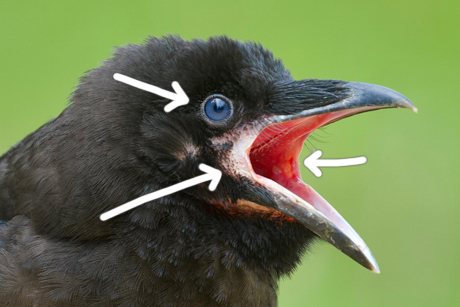



Services we offer:
- Behavior modification and aversive conditioning
- Humane repellents and deterrents
- Vacant nest removal, cleanup, & exclusion
Wild birds are protected under the Migratory Bird Treaty Act, which prohibits the take (including disturbance, capture, destruction) of protected birds, active nests or eggs without authorization by the U.S. Fish and Wildlife Service.
Ravens and crows belong to the family Corvidae, which also includes jays, rooks and magpies.
Common ravens are larger than crows. In flight, their tail appears rounded rather than straight across, and they have a thinker, more curved beak than the American crow.
Corvids are incredibly smart birds that have adapted to living near humans and can sometimes get into trouble. The common, underlying factor to corvid (and other wildlife) conflicts is a nearby reliable source of food.
In addition to restricting the birds' access to food, there are some deterrents that, when used together, can alter unwanted behavior.
If you're experiencing an issue with a corvid, give us a call to discuss possible solutions.
YOUNG CROW UNABLE TO FLY
In spring and summer months, it's common to find young corvids hopping around, unable to fly. This could be the result of a disturbance at the nest, or simply the youngster on its first adventure.
If the young bird can hop and perch and if both wings appear healthy - one is not droopy or dragging, the baby should be left alone. The parents will continue to take care of it.
A young corvid is fairly easy to identify. Its eyes will be a bluish-grey, it will have pinkish 'lips' at the corners of its bright red mouth.
